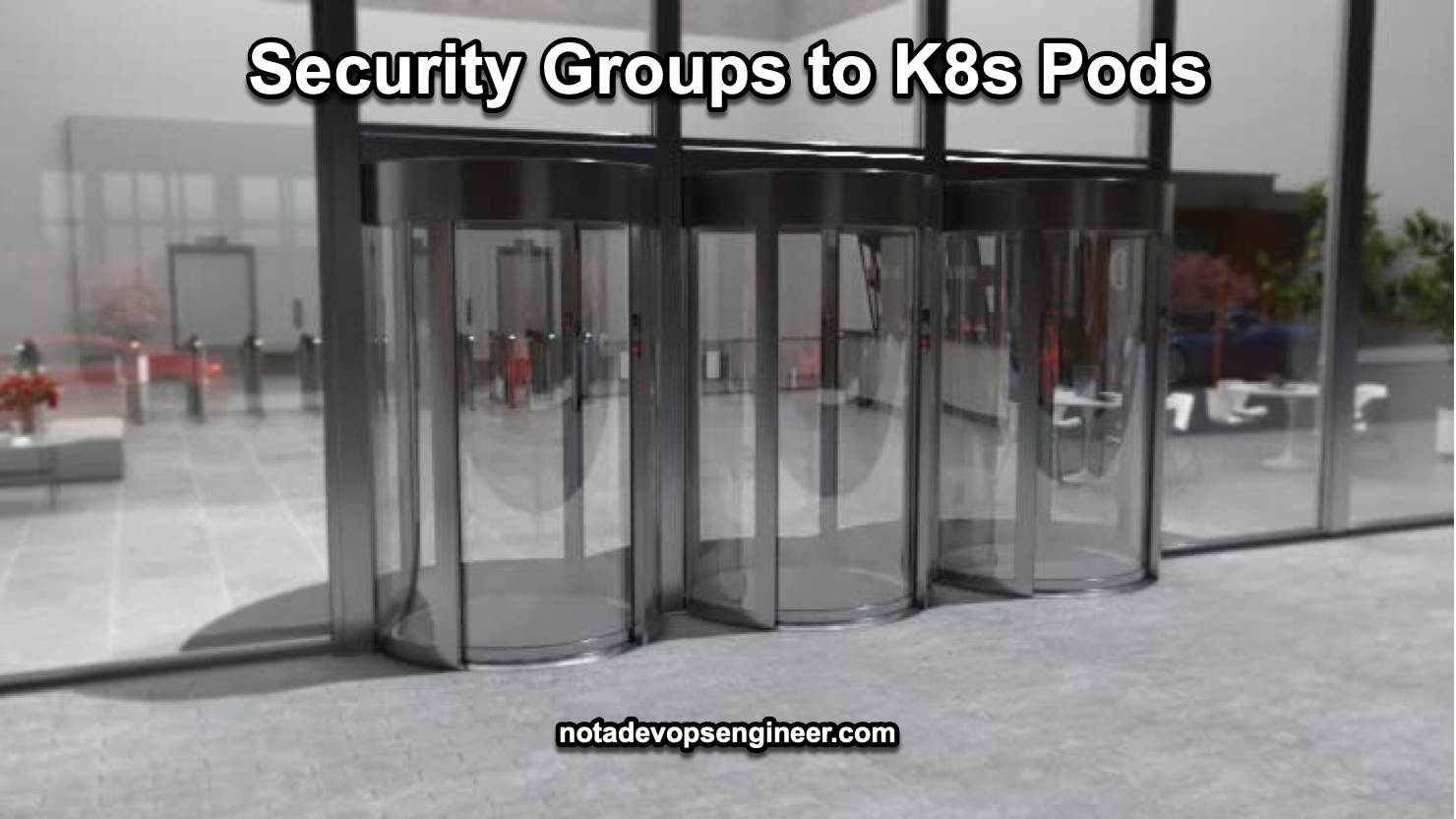4 min to read
Security Groups to K8s Pods
Adding extra security

Enhancing Network Security
We all know that AWS Security Groups are, but just for the sake of being on the same page, they act as virtual firewalls for your Amazon EC2, RDS instances, ElasticCache, and pretty much all AWS services that can be exposed to external clients to control inbound and outbound traffic. They operate at the instance level, providing a fundamental layer of network security in AWS environments.
Key Features of Security Groups:
- Stateful filtering of inbound and outbound traffic
- Rule-based access control for IP protocols, ports, and IP addresses
- Default deny-all rule, with explicit allow rules for permitted traffic
- Ability to reference other security groups, simplifying management in complex environments
Benefits of Adding Security Groups to Kubernetes Pods
Integrating AWS Security Groups with Kubernetes Pods offers several advantages for cloud-native applications:
1. Fine-grained Network Control
By associating Security Groups with individual Pods, administrators can implement precise network policies at the Pod level. This granular control allows for tailored security measures based on the specific requirements of each application component.
2. Simplified Compliance Management
For organizations operating in regulated industries, applying Security Groups to Pods can help meet compliance requirements by ensuring consistent network security policies across the entire application stack.
3. Enhanced Isolation and Segmentation
Security Groups enable better isolation between different components of an application. This segmentation can limit the blast radius of potential security breaches and prevent lateral movement within the cluster.
4. Seamless Integration with AWS Services
When Pods are associated with Security Groups, they can more easily integrate with other AWS services that rely on Security Group rules for access control, such as RDS databases or ElastiCache clusters.
5. Consistent Security Model
By extending the familiar AWS Security Group model to Kubernetes workloads, organizations can maintain a consistent security approach across their hybrid or multi-cloud environments.
6. Dynamic Security Policies
Security Groups can be updated in real-time without requiring Pod restarts, allowing for dynamic adjustment of security policies in response to evolving threats or changing application requirements.
With security groups for Pods, you can improve compute efficiency by running applications with varying network security requirements on shared compute resources. Multiple types of security rules, such as Pod-to-Pod and Pod-to-External AWS services, can be defined in a single place with EC2 security groups and applied to workloads with Kubernetes native APIs.
Implementing Security Groups for Pods
To leverage AWS Security Groups for Kubernetes Pods, you’ll typically need to use the Amazon VPC CNI plugin for Kubernetes. This plugin allows Pods to have the same networking properties as EC2 instances, including the ability to associate Security Groups.
Key Steps for Implementation:
- Ensure your EKS cluster is using the Amazon VPC CNI plugin
- Enable Security Groups for Pods feature in your EKS cluster
- Create or modify Security Groups with the desired rules
- Annotate your Pod or Deployment specifications with the appropriate Security Group IDs
Create the resources
cat >my-security-group-policy.yaml <<EOF
apiVersion: vpcresources.k8s.aws/v1beta1
kind: SecurityGroupPolicy
metadata:
name: my-security-group-policy
namespace: my-namespace
spec:
podSelector:
matchLabels:
role: my-role
securityGroups:
groupIds:
- my_pod_security_group_id
- my_pod_security_group_id_2
EOF
Once applied, your new pods will have the security group attached and therefore, they will be able to access your private resources such as RDS instances or Instances on where they need to reach.
Conclusion
Integrating AWS Security Groups with Kubernetes Pods represents a powerful approach to enhancing the security posture of cloud-native applications. By providing fine-grained network control, simplifying compliance management, and offering seamless integration with AWS services, this feature bridges the gap between traditional EC2-based architectures and modern containerized workloads. As organizations continue to adopt Kubernetes and migrate to the cloud, leveraging Security Groups for Pods will become an increasingly valuable tool in the cloud-native security toolkit.
References:
- https://docs.aws.amazon.com/eks/latest/userguide/security-groups-for-pods.html
- https://aws.github.io/aws-eks-best-practices/networking/sgpp/
- https://aws.amazon.com/blogs/containers/introducing-security-groups-for-pods/
- https://docs.aws.amazon.com/eks/latest/userguide/sg-pods-example-deployment.html
References
Build On!

